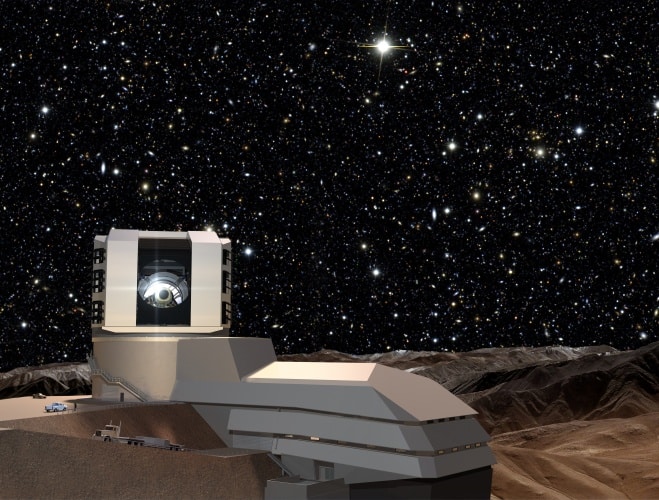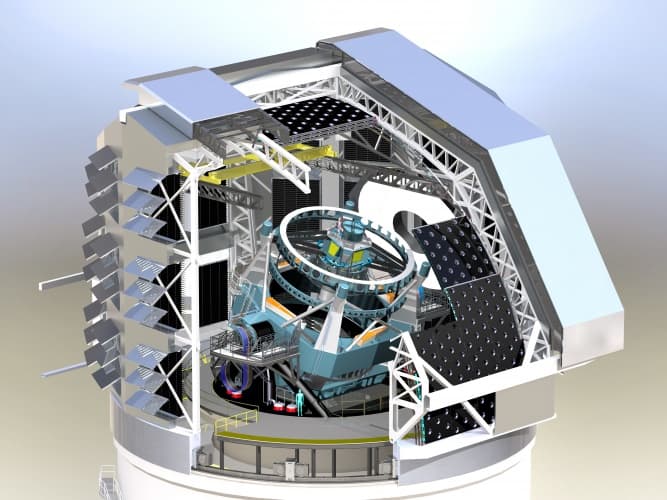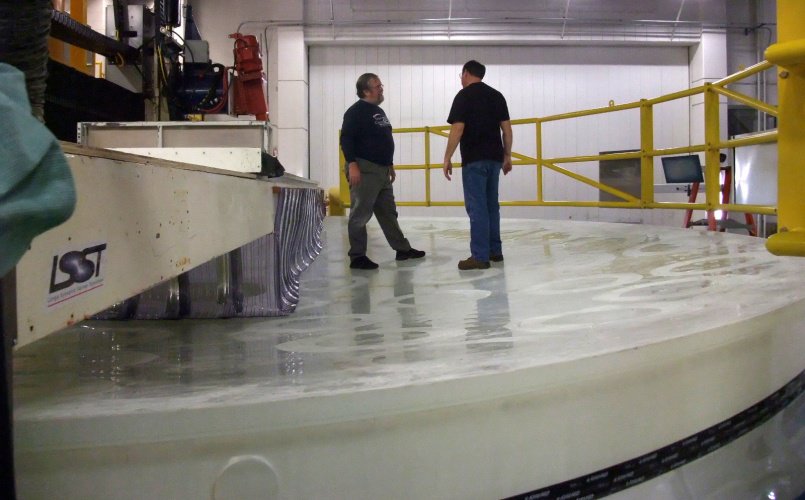Set to be the most powerful digital camera on Earth, the facility that will house the Large Synoptic Survey Telescope (LSST) has begun construction in the Chilean Andes. Scheduled to begin operations — or ‘receive first light’, as astronomers put it — in 2019, LSST is part of a huge series of experiments and observations at international facilities that’s hoped to gain more information about dark energy, an enigmatic phenomenon that is believed to be involved in the accelerating expansion of the universe.

At 8.4m wide, the LSST is quite modestly-sized among the new generation of telescopes (the largest planned facilities have primary mirrors some 30m across). It will scan the entire visible sky from its site, 2.7km above sea level at Cerro Pachon, for ten years from 2022, using a 3.2billion pixel digital camera to systematically build up a 3D image of the observable universe. While not the biggest digital camera ever built — that accolade goes to the space telescope Gaia, observing the universe from a libration point over a million km from Earth with a 1Gigapixel focal plane array — LSST will be the largest terrestrial camera.

LSST is a collaboration between Chile, the US National Science Foundation, and the French research organisation CNRS. It will have a three-mirror design, which will allow it to track moving and changing celestial objects such as asteroids and novae, and will be able to track the physical quantities associated with dark energy: the position of galaxies, and their relative movement. Gathering some 30TB of data every night, the telescope will help to expand the catalogue of celestial objects to around 10billion galaxies – four orders of magnitude larger than today.





Poll: Should the UK’s railways be renationalised?
I think that a network inclusive of the vehicles on it would make sense. However it remains to be seen if there is any plan for it to be for the...